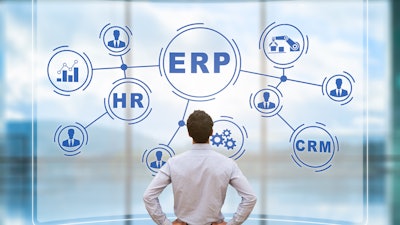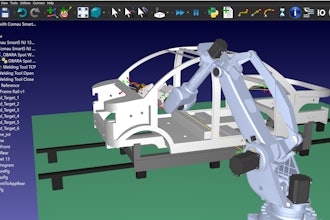
Whether you view XaaS (“everything-as-a-service”) as a dream or a nightmare, it’s here to stay. More customers are preferring to pay for results rather than physical products that may or may not produce those results, just as they would rather spend on operational as opposed to capital expenses. Manufacturers, margins squeezed and customers fickle, can see XaaS as a way to create new revenue streams and increase value.
For those just dipping their toes into the XaaS ocean, your timing is good: it’s not too late, and you can learn from the early adopters. Their experiences, as well as those of XaaS pioneers in other industries, point to five key steps in transitioning your business to one that embraces XaaS.
Custom Approaches and Pace
Before going into those steps and, just as importantly, discussing the underlying digital infrastructure needed to underpin them and ensure XaaS’s financial viability, let me be clear that XaaS is not a one-size-fits-all proposition. Nor must it be a revolutionary one – though it will challenge your business. Manufacturers will always make things and service them. XaaS will, though, shape how they make things and, even more so, how they sell and service them.
But XaaS will differ depending on industry segments and customer preferences. Some will buy equipment as they always have, given that depreciation is an important part of their financial models; others will prefer to subscribe to a bundle of hardware, software and services. The question will be how much servitization makes sense for customers and manufacturers alike, and there won’t be a single answer. That said, on to aforementioned five steps to embracing XaaS.
Step one. Establish what your XaaS business model will look like. Will you provide add-on digital services to your existing products, based on data, on a subscription basis? Will you add software capabilities and sell them on subscription? Will you leap straight to offering solution bundles on usage or outcome-based models – or even ones that base your financial success on that of your customers? These gradations will dictate the impact the XaaS transition has across your business.
Step two. Understand how a shift from a quote-to-cash product maker to an XaaS service provider will affect your business. Those impacts will span R&D, engineering, manufacturing, finance, sales, service, even HR.
Externally, collaboration with customers and partners must be tighter and more flexible than ever. XaaS customers often look beyond the walls of any one supplier for bundled solutions, and XaaS businesses need partners for a range of help, from servicing idled equipment quickly to driving growth through new product-service combinations. The imperative for agility will put pressure on design and engineering teams to build in modularity and flexibility to adjust to changing customer requirements and enabling future add-on revenue opportunities.
Make no mistake: XaaS will touch every aspect of your business and introduce new interdependencies that will make managing and strategic decision making even more challenging than it is today.
Step three involves pricing. Do you price based on outcome? Usage? Uptime? Risk? Should you go with cost-plus pricing that covers fixed costs plus a contingency for unforeseen costs? A recent Yale study offers crucial insights. Instead of fixating on cost plus or usage-based pricing, focus on optimizing revenue growth and customer-lifetime value through a differential and customer-centric pricing approach.
Step four involves managing risk. Tying your revenues to the success of a customer’s business presents new perils for an industrial manufacturer – ones that range from standard business and market risks to exogenous “black swan” events. Rolls Royce took a hit when the Covid-19 pandemic flipped its “Power-by-the-Hour” jet-engine service contracts from asset to liability.
Creative partnerships can help address many risks. Germany-based Trumpf has entered into a strategic pilot with Munich Re so they can offer their laser cutting machines on pay-per-part model. In this partnership, Munich Re acts as a business-model enabler by financing the machine and bearing the resulting investment risk. Another industrial manufacturer, Heidelberg, has entered into a similar partnership with Munich Re to expand its equipment-as-a-service contracts and subscription business.
Step five is to build sustainably into the XaaS equation. XaaS contracts often place the onus of a product-based bundle’s entire lifecycle on the industrial manufacturer. But the considerations here go beyond maintenance and end-of-life management. Mandates for and pledges toward carbon neutrality – mandates emerging in places such as France, Sweden, and the United Kingdom as well as pledges of automakers, oil giants, and other major industrial-machinery customers – will require detailed carbon accounting throughout supply chains. That, in turn, demands a high degree of digitalization.
The inevitable need to demonstrate environmental sustainability through carbon accounting and other tools dovetails with the pressing demands on industrial manufacturers to manage the XaaS transition in a financially sustainable way. That will hinge on making well-informed tactical and strategic decisions quickly based on fine-grained, real-time information pouring in from financial systems, procurement systems, production systems, maintenance systems (including IoT data flowing from the machines themselves), experience-management solutions, and elsewhere – including from the systems of suppliers and partners.
Sales teams will be able to flexibly bundle solutions, estimate the total cost of ownership, and demonstrate the benefits XaaS solutions are delivering. Marketing groups will be able to microtarget different customer segments. Financial teams will have to precisely understand costs over the contract lifecycle and set pricing in addition to enabling precise, timely billing and monitoring profitability. They’ll also use this wealth of data to develop new analytics not only to track and manage, but also to recognize opportunities for partnerships, risk management, and financing-related business prospects.
Executives must be able to quickly and comprehensively grasp operational and financial performance of XaaS contracts over their lifetime and determine the viability of the different product-service combinations over time. On the operations side, manufacturers must determine costs and manage revenue sharing amongst the partner networks delivering shared XaaS solutions. Maintenance managers must harness IoT and other data to fine-tune AI-driven predictive maintenance programs.
Perhaps most exciting are the prospects I haven’t explored. Combining creative, sharp people with the steps to successful XaaS efforts will bring to bear business models we can’t yet foresee.
Ankit Sharma leads SAP’s cross-industry strategic program for subscription, outcome-based, and XaaS business models.






















